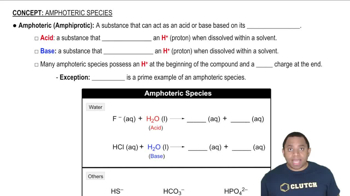Here are the essential concepts you must grasp in order to answer the question correctly.
Isoelectronic Species
Isoelectronic species are atoms or ions that have the same number of electrons and, therefore, the same electronic configuration. In this case, F- and Na+ both have 10 electrons, making them isoelectronic. Understanding this concept is crucial for comparing their effective nuclear charges (Zeff) since they experience similar electron-electron interactions despite differing nuclear charges.
Recommended video:
Effective Nuclear Charge (Zeff)
Effective nuclear charge (Zeff) is the net positive charge experienced by an electron in a multi-electron atom. It accounts for the actual nuclear charge minus the shielding effect of other electrons. Calculating Zeff helps in understanding how strongly the nucleus attracts its electrons, which is essential for predicting chemical behavior and properties of ions like F- and Na+.
Recommended video:
Screening Constant (S)
The screening constant (S) quantifies the extent to which inner electrons shield outer electrons from the full effect of the nuclear charge. In the context of the question, core electrons contribute a value of 1.00 to S, while valence electrons contribute 0.00. This distinction is important for accurately calculating Zeff for the 2p electrons in the ions, as it directly influences the perceived nuclear charge experienced by these electrons.
Recommended video:
 Verified step by step guidance
Verified step by step guidance


